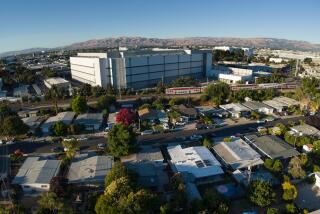Power Plant Aids More Than UCLA
- Share via
UCLA’s proposed chiller-cogeneration plant, which would provide chilled water, steam and electricity to the campus, would benefit not just the university but the community at large (Times Aug. 23.)
* The project would improve air quality, causing far less pollution than the campus’s aging steam plant, even if the steam plant were modified to meet today’s environmental regulations. Emissions from the cogeneration facility would be minimized through the use of an ammonia-based control system, as recommended by the South Coast Air Quality Management District’s “Best Available Control Technology” regulations.
* The existing inefficient systems are based on antiquated engineering concepts that cannot meet today’s energy conservation goals. As a state university, supported in part by taxpayer revenues, UCLA has a duty to be energy efficient and fiscally responsible. The chiller-cogeneration project would enable UCLA to immediately correct critical infrastructure problems that would otherwise require $84 million in energy costs over 30 years.
* Because UCLA currently must rely on an outside source for its electricity, the campus and the UCLA Medical Center are subject to power outages that jeopardize critical research projects and patient care services. The new facility would act as an emergency generator, enabling UCLA to retain power and provide life-saving services to the region during a disaster, such as an earthquake.
UCLA has made a concerted effort to keep community leaders apprised of the pollution-reducing and energy-saving features of the project. The plant would provide a more reliable source of electrical and thermal energy in a more environmentally responsible manner than any of its alternatives.
CHARLES E. YOUNG
UCLA Chancellor
More to Read
Sign up for Essential California
The most important California stories and recommendations in your inbox every morning.
You may occasionally receive promotional content from the Los Angeles Times.













